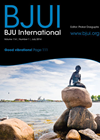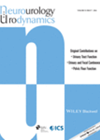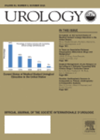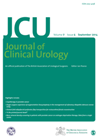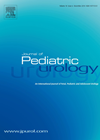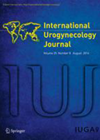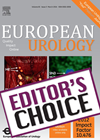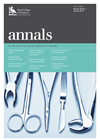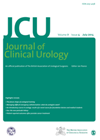
Journal Reviews archive for 2015
Is TRUS and biopsy obsolete as a diagnostic test for prostate cancer: refining the perineal biopsy technique?
Whilst there has been a dramatic shift in how patients are investigated for potential prostate cancer, transrectal ultrasound (TRUS) and biopsy remains the most commonly used technique for tissue sampling. In this single centre, retrospective analysis, 634 men, over a...
Prostate alpha-1 receptors: what is new?
This article from the west of Germany will be of interest to many of us who use alpha-blockers for bladder outflow symptoms. The classic model of understanding of alpha receptors has been challenged recently. Further models have been identified, including...
IC and risk of CHD
Bladder pain syndrome / interstitial cystitis (BPS/IC) is a chronic, multifactorial and relapsing condition. Aetiology includes: inflammation, allergic, neuropathic, auto immune, vascular factors, etc. This study from Taiwan aimed to investigate the risk of coronary heart disease (CHD) among IC...
Impact of prostatic apex in continence after RARP
This article investigates the impact of prostatic apical shape from preoperative magnetic resonance imaging (MRI) on early recovery of urinary continence after robot-assisted radical prostatectomy (RARP). It is a retrospective study of 1011 patients at a tertiary centre. Patients were...
Cryotherapy in prostate cancer
This review of the literature aims to summarise what is known in regards to outcomes in patients undergoing cryotherapy in a number of settings: whole gland, salvage and targeted focal therapy. It highlights that more prostate cancers are being diagnosed...
Androgen insensitivity in patients with proximal hypospadias
A number of surgeons use preoperative androgen stimulation for a period of time prior to hypospadias surgery. The aim is to increase glans circumference, penile length and improve prepucial vascularisation pre-surgery. Data confirming the results of these aims is scarce....
Adolescents and adults in paediatric urology clinics
This elegant descriptive paper retrospectively reviewed cases seen in a paediatric urology clinic with respect to age, diagnosis and presentations in a major Brazilian city. Of 521 patients, 404 were <12 years old, 103 were between 12-18 and 14 were...
A novel approach to surgical management of the nutcracker phenomenon
The nutcracker phenomenon is defined as compression of the renal vein between the aorta and superior mesenteric artery and can present with loin pain, haematuria and a left-sided varicocele with treatment options including left renal vein transposition, superior mesenteric artery...
TPTNS: evaluation of a therapeutic option in the management of anticholinergic refractory overactive bladder
This is a prospective study evaluating the tolerability and efficacy of transcutaneous posterior tibial nerve stimulation (TPTNS) in patients with urodynamically proven overactive bladder (OAB), who have failed anticholinergic treatment. Forty-three patients were studied and followed up over a period...
Impact of adjuvant radiation therapy on urinary continence recovery after radical prostatectomy
The functional side-effects of both radical prostatectomy and radiotherapy for prostate cancer are well known. The aim of this study was to evaluate if there was a significant worsening in recovery of urinary continence in those undergoing radical prostatectomy followed...
Durability and complications of photoselective vaporisation of the prostate with GreenLightTM
Alternatives to the standard transurethral resection of the prostate (TURP) in the management of bladder outflow obstruction due to prostatic hypertrophy are becoming more common. In this retrospective case series, the outcomes of 117 patients undergoing GreenLightTM lithium triborate photoselective...
Patient-reported outcomes after prostate cancer treatment
This study used the survivorship (LIVESTRONG) care plan tool to identify patient-reported toxicities that occurred following treatment for prostate cancer. All patients had undergone treatments, which were considered to have similar oncological endpoints. The tool asked patients questions with regard...

